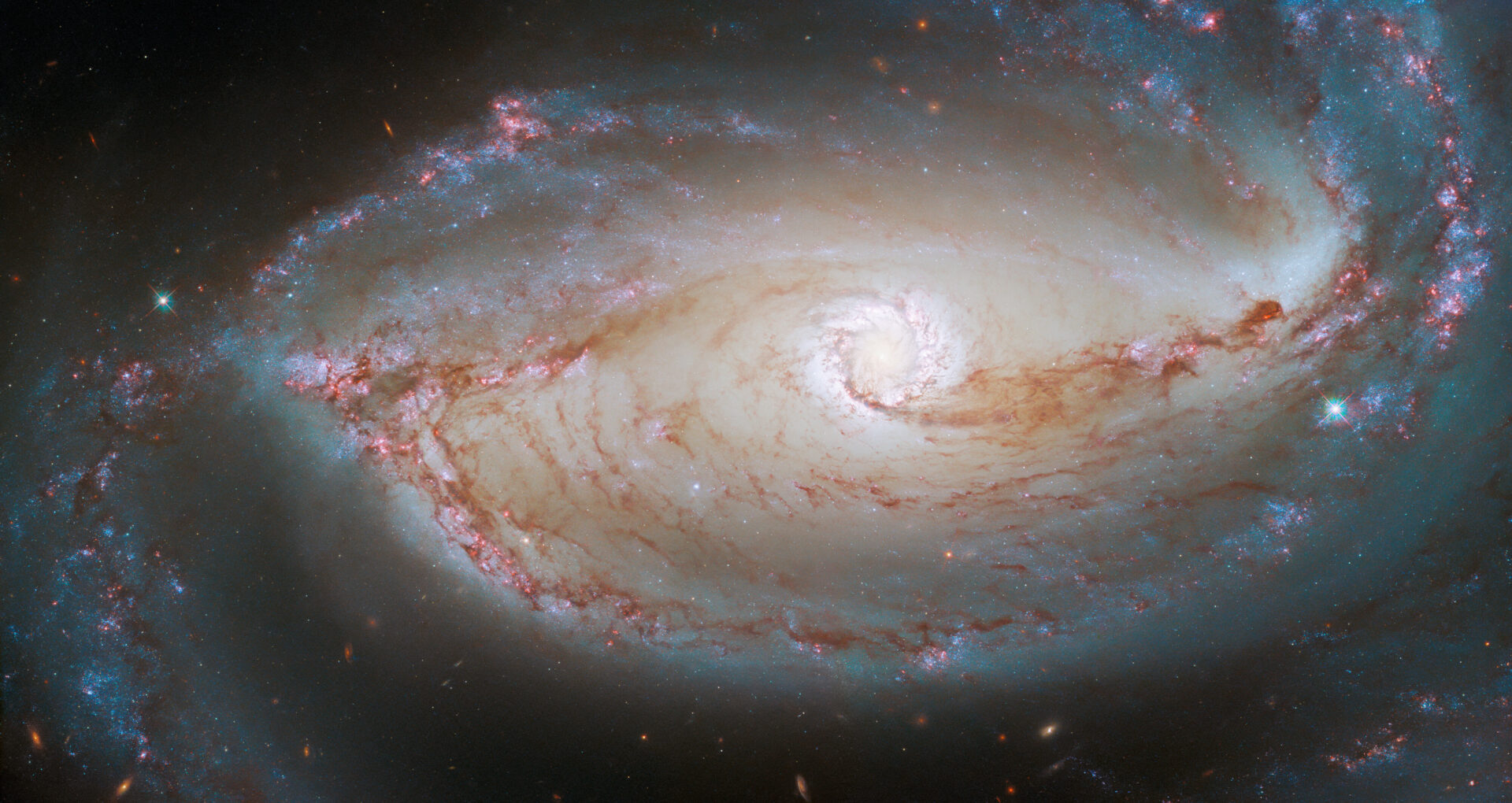The presented image, published on the Hubble mission website, demonstrates a fascinating picture, something resembling an “eye”. This “eye” consists of stars, dust and gas swirled into a giant whirlpool, in the center of which a supermassive black hole is hiding.

In the photo we can see the center of the galaxy NGC 1097. The galaxy is located at a distance of 48 million light years from the Milky Way in the constellation Fornax. NGC 1097 is a barred spiral galaxy. In the Hubble image, you can see some details of its structure, including dark red tendrils of dust stretching through the center and spiral arms densely studded with bright stars.
How to get color photos of space
The NGC 1097 image was taken by two main Hubble Space Telescope instruments: the Wide Field Camera 3 (WFC3) and the Advanced Camera for Surveys (ACS).
The idea that a single image can be taken using two different cameras is not very counterintuitive. But we should understand that the human eye is able to detect light waves at optical wavelengths from about 380 to 750 nm, using three types of receptors, each of which is sensitive only to a part of this range. Our brain interprets these specific wavelengths as colors.
By contrast, space telescope cameras like the WFC3 or ACS are sensitive to a single broad wavelength range in order to maximize the amount of light collected. Raw images from telescopes are always in grayscale and show only the amount of light captured at all these wavelengths.
Filters are used to turn these black and white images into color. They transmit only light at a strictly defined wavelength. Then the images obtained using different filters are put together, that allows to create a color shot like the one presented above.
You can also admire the Hubble telescope’s image of the Jet Set.
According to https://esahubble.org
